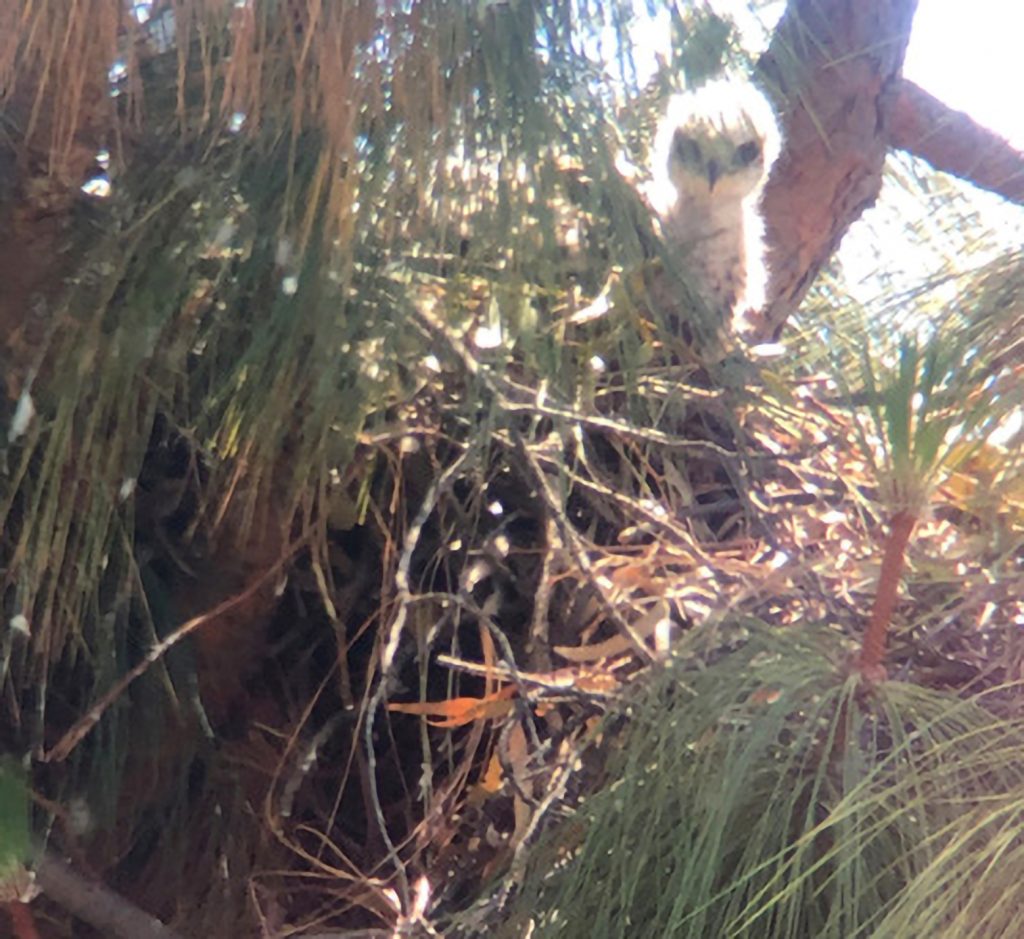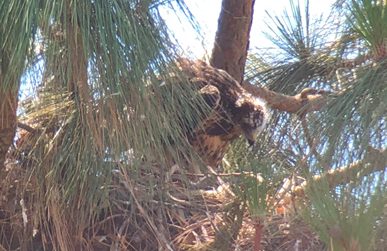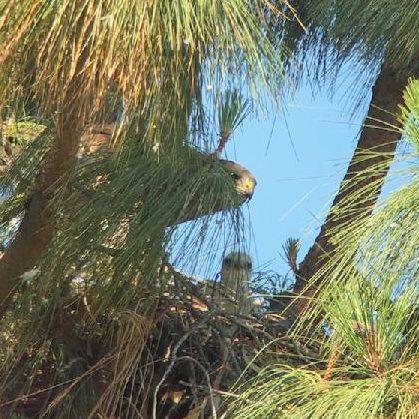
Sitting atop the trees and defending his nest from predators, the male hawk holds a fiercely protective gaze over his newborn chick.
The latest addition to Sandia/California’s wildlife is the Swainson’s hawk (Buteo swainsoni). A breeding pair of the raptors built their nest in a pine grove along the west parking lot this past April, and their chick subsequently hatched around May 26. The medium-sized birds are recognizable by their white bellies and brown bodies, which typically blend into their surroundings. To the untrained eye, the hawks look like large pinecones.
These feathered masters of disguise are living proof that nature is the ultimate magician — most people are unaware that a protected species is lodging just fifty feet above them.
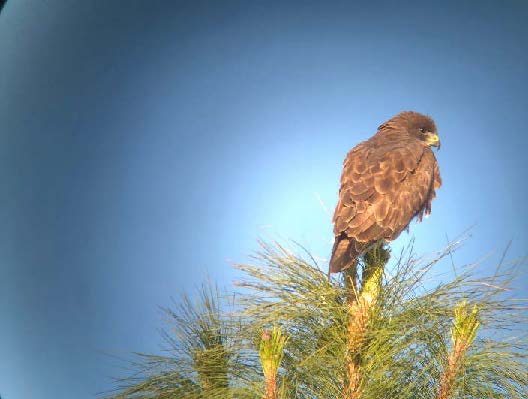
Federally protected under the Migratory Bird Treaty Act, the Swainson’s hawk is listed by the California Department of Fish and Wildlife as a threatened species. While both California and the U.S. government prohibit the illegal taking of a hawk, additional protections regarding the hawk’s nest and habitat are enforced solely by the Department of Fish and Wildlife.
Biologists from Lawrence Livermore National Laboratory first reported the presence of the hawks, and a biologist from Condor Country Consulting is under contract with Sandia to monitor the birds’ stress levels. Nearby construction on-site has been halted occasionally to prevent disturbing the hawks as their chick develops its wing feathers. After the chick is fully fledged and ready for flight, a process that takes approximately 44 days, the hawks are expected to remain in the area for several weeks before migrating south.
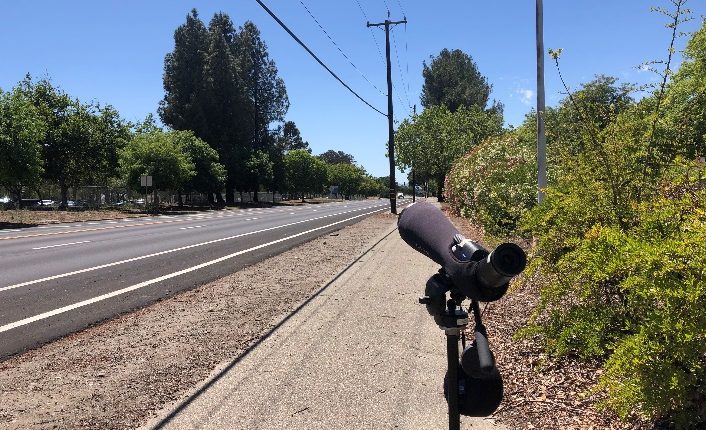
According to the consulting biologist, the hawks will migrate in late August, after which Sandia’s Environment, Safety and Health department will develop a monitoring plan to survey future activity at the site of the nest. It is unlikely that the California Department of Fish and Wildlife will grant the removal of the nest if any of the birds return, noting that the young hawk may come back if the nest is still accessible.
The family of Swainson’s hawks has been drawing interest from local birdwatchers. Stephanie Klein, a member of the Talon Ecological Research Group, stated during a July 1 visit, “This is the first [Swainson’s hawk] nest we’ve ever recorded in Alameda County.”
Move over, Thunderbird; there’s a new chick in town.
